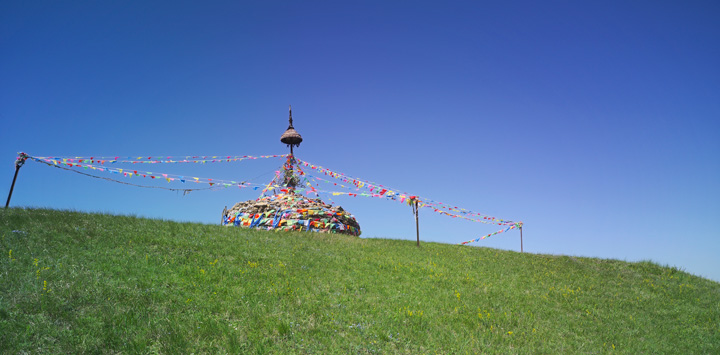
Huhhot, meaning “Green City” in Mongolian, is the capital city of China’s Inner Mongolia Autonomous Region. It is considered an important cultural and commercial centre in the region.
The city has easy access to nearby scenic spots such as the Zhaojun Tomb, Xi La Mu Ren Grassland and the Genghis Khan Mausoleum.
Read more destination information from Inner Circle.
Da Zhao Temple
Da Zhao Temple which means “Infinite Temple” in Chinese is the town’s Gelukpa or Yellow Hat Sect temple. It is also the oldest building in the whole of Huhhot. Locals call it the Silver Buddha Temple because it is home to the rare 8.2-foot-high Sakyamuni statue made of silver.
The temple has become a popular tourist attraction due to its remarkable buildings, fine statues, distinctive frescos, musical instruments and extensive collection of Buddhist scriptures.
Temple of the Five Pagodas
Known as the “Precious Pagoda of the Buddhist Relics of the Diamond Throne”, the Temple of the Five Pagodas is located close to the Qingcheng Park in Huhhot. Among locals, this famous ancient Buddhist Temple is called Jingangzuo Dagoba.
Constructed entirely out of stones and bricks, the temple comprises of three main parts and is 13 meters in height. The three parts are the base, the seat and the head which are the five pagodas.
One of the notable features here is the Mongolian Astronomical Map which is carved out into a huge stone. This illustrious map is labelled in Mongolian and is the first of its kind in the world.
Zhaojun Tomb
Covering 1.4 hectares and standing 33 meters high, the tomb of Princess Wang Zhaojun is located on the southern outskirts, nine kilometres from Huhhot.
It is believed that Wang Zhaojun is a symbol of national unity, and that her tomb is a monument to this unity.
Genghis Khan Mausoleum
Genghis Khan, the great Mongolian hero, was responsible for uniting the disordered Inner Mongolia prairie. Known by his people as the Khan of Khans, Genghis Khan guided his people to form a great civilization.
The Genghis Khan Mausoleum, which is dedicated to this powerful King, was constructed in 1954. The prominent feature of the main hall is the impressive 13-feet statue of Genghis Khan made entirely out of white marble.
Xilamuren Grassland
Meaning the “Yellow Water” in Mongolian, the Xilamuren Grassland is located 90 kilometres north of Huhhot.
The weather here is cool, even in the summer. Visitors can ride camels, visit herdsmen’s homes, watch horse races and wrestling, and join evening parties held in the open air.
Xiangshawan (Resonant Sand Bay)
Xiangshawan is located in Dalate-Banner, 45 kilometres from the city of Baotou.
Sliding down from the 90-meter-high, 45-degree sand hill, one can supposedly hear the sound of car and aircraft engines, a natural and as yet inexplicable phenomenon.
Apart from sand sliding, one can also ride horses and camels, or ride on sand-sliding boats.
